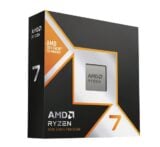Halo Infinite’s PC system requirements have been confirmed
Microsoft recently announced a December 2021 release date for the game

Halo Infinite’s full PC system requirements have been confirmed.
The game’s minimum and recommended PC system requirements, which are now listed on Steam, are largely unchanged from those recently announced for the game’s multiplayer technical preview.
“Halo Infinite is built for PC,” according to the title’s Steam listing. “From advanced graphics settings, ultrawide/super ultrawide support and triple-key binds to features like dynamic scaling and variable framerates, Halo Infinite is the best Halo experience on PC to date.”
Halo Infinite PC system requirements
MINIMUM:
Requires a 64-bit processor and operating system
OS: Windows 10 RS3 x64
Processor: AMD FX-8370 or Intel i5-4440
Memory: 8 GB RAM
Graphics: AMD RX 570 or Nvidia GTX 1050 Ti
DirectX: Version 12
Storage: 50 GB available space
RECOMMENDED:
Requires a 64-bit processor and operating system
OS: Windows 10 19H2 x64
Processor: AMD Ryzen 7 3700X or Intel i7-9700k
Memory: 16 GB RAM
Graphics: Radeon RX 5700 XT or Nvidia RTX 2070
DirectX: Version 12
Storage: 50 GB available space
Having originally been scheduled for release in November 2020 as an Xbox Series X/S launch title, Microsoft announced on Wednesday that Halo Infinite will be released for consoles and PC on December 8, 2021.
Halo Infinite’s campaign will be released alongside the game’s free-to-play multiplayer component.
However, developer 343 Industries recently confirmed it had delayed the release of two Halo Infinite modes originally planned for launch until next year.
Head of creative Joseph Staten revealed in a development update that 343 is now planning to make campaign co-op available during Infinite’s second post-launch season, which will start around three months after the game’s release, and Forge in Season 3, which is planned for around six months after launch.
Staten also confirmed that split-screen multiplayer will be held back on PC until after launch due to technical challenges.
















